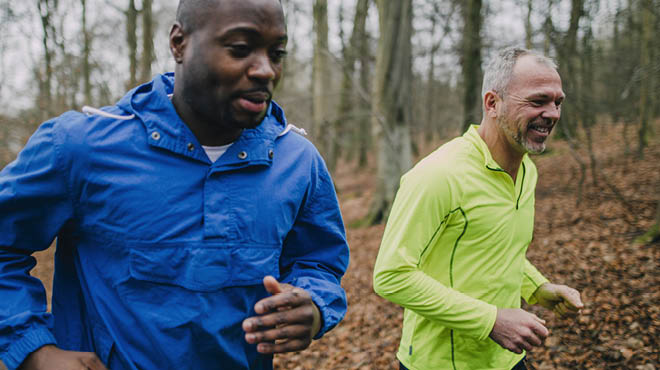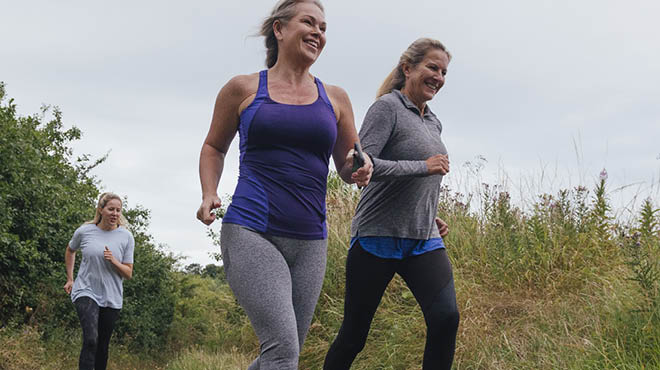Posted By

Leslie Grommersch, D.P.T.
Physical Therapy

Kimberly Olsen, P.T.
Physical Therapy

Desiree Essler, P.T.
Physical Therapy
Recent Posts
Want to become a better runner? Tips to step up your performance, prevent injuries

People choose running to stay active for a variety of reasons, including stress relief, weight loss, training for a race or for overall physical and mental wellness. No matter why you run, it's essential to have a training plan and know how to run smart to avoid injury.
How to train efficiently and safely
If you're new to running, a run-and-walk program can help you succeed. Use time increments that best suit your fitness level. For example, run for 30 seconds, walk for one minute to recover and repeat.
Here are some tips to consider for your running plan:
- As a new runner, aim to lace on your running shoes three to four times per week. Start with low mileage and slowly increase.
- Don't increase your training mileage by more than 10% a week to help avoid injury. If you typically run three miles per week and want to increase your distance, add no more than 0.3 miles.
- Warm up at the start of your run for at least three to five minutes, followed by a gradual increase in intensity.
- You should be able to talk in complete sentences without being short of breath when you run. If you can't, you're likely working above your target aerobic zone.
- Cool down at the end of your run for three to five minutes to prevent blood from pooling in your legs and allow your heart rate to decrease.
As you gain experience and confidence with your running, you may want to take part in a casual or competitive race.
Your training plan should include preparing for the event by mimicking the race. For example:
- Duplicate the pace or minutes per mile you want to set for the event.
- Allow at least one easy day of training or rest for every heavy day of training.
- Incorporate strength training to avoid muscle imbalance.
- Stretch regularly after a run and hold the stretch for 20–30 seconds. Take care not to bounce.
How to best replenish your body when training
Improving your performance happens even when you don't have your running shoes on.
These factors also are part of your training:
- Diet
Refuel after a race or workout within 30–60 minutes. Choose a combination of carbohydrates and protein. - Hydrate
Drink water before, during and after you run. It's equally important to stay hydrated throughout the week, not just on the days you run. - Sleep
The average person needs seven and a half to eight hours of sleep per night. Increase this by one extra minute per night for each mile you train per week.
Consider these six things while training:
- Buy good running shoes and ensure they fit your foot properly. Make sure to replace your running shoes every 300–400 miles.
- Cross-train if you find it difficult to run every day. Biking, elliptical training or swimming are excellent alternatives.
- Finish your run feeling strong, not worn out.
- It's normal to experience general muscle soreness that's gone within 24 hours.
- Stop running if pain affects your gait. Pain or stiffness should improve after the first 10 minutes. If it doesn't improve, stop.
- Watch out for excessive fatigue, a higher resting heart rate, muscles that are sorer, irritability, difficulty sleeping and decreased motivation. If these appear, check in with your primary care provider.
- Have your gait analyzed to improve your running. Watch a video on what to expect during a gait analysis:
Whether you're new to the sport or an elite athlete, running can be an enjoyable experience. Using these tips can help you become the runner you aspire to be.
Leslie Grommersch, Kimberly Olsen, and Desiree Essler are physical therapists in Mankato, Minnesota.


